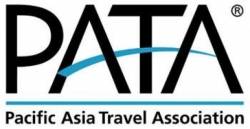
Preliminary results released today by the Pacific Asia Travel Association (PATA) show a collective increase of 6 percent year-on-year for international arrivals into Asia/Pacific destinations during each of the months of October and November 2011.
For the first 11 months of the year, South Asia was the star growth performer, followed by Southeast Asia, Northeast Asia, and the Pacific, all of which saw tourism demand improve, albeit at different rates of growth. This momentum is expected to continue for the rest of the year and paves the way for an expected full-year arrivals gain of 5-6 percent in 2011, above the global growth figure of 4 percent. The overall international visitor arrivals count to the wider Asia Pacific region – which includes North America - is expected to reach around 430 million for 2011.
Travel demand to South Asia was particularly strong with growth of 15 percent for the month of October (year-on-year), however, this momentum stalled a little in November when the aggregate gain fell to 9 percent. With the exception of India, all reporting destinations within this sub-region showed outstanding results with double-digit growth during the month of November. A number of destinations in the region set new records for monthly foreign visitor volumes including the Maldives (+22 percent) and Nepal (+17 percent) in October, and Sri Lanka (+26 percent) in November. Growth into the sub-region was supported by a strong performance out of Europe backed up with continued strong expansion out of China and India. Not surprisingly, this sub-region is poised to emerge as the fastest growing in the Asia/Pacific region with a full-year gain expectation of around 11 percent-12 percent for 2011.
Southeast Asia recorded a relatively slower close on the year with growth of 7 percent and 3 percent in October and November 2011, respectively. A number of factors were responsible for this result, most particularly the flooding that occurred across many destinations. Thailand, although partially impacted by flooding - and a negative perception of the extent of the flooding - realized a gain of 8 percent and a loss of 18 percent in foreign arrivals during October and November 2011, respectively, compared to the corresponding periods in 2010. This negative effect also continued through December but at a reduced rate. Thanks to sustained travel demand out of China in particular, many reporting destinations managed to show double-digit growth in November ranging from 43 percent for Vietnam, 26 percent for Myanmar, 20 percent for the Philippine,s to 13 percent for Indonesia. Overall, growth in international arrivals to Southeast Asia for calendar year 2011 is expected to be around 11 percent.
Growth in international arrivals into Northeast Asia saw gains of 5 percent in October and 8 percent in November - the strongest monthly growth recorded during the first eleven months of 2011. In particular, this trend reflects the slow recovery of foreign arrivals to Japan, which has been gradually improving from a low of 296,000 in April to 616,000 visitors in October and an expected 551,900 in November. That would bring the reduction in foreign inbound arrivals for Japan to just over 29 percent year-to-date. China reported gains of 1 percent and 3 percent for October and November, respectively, and growth remains strong for other destinations in the sub-region ranging between +9 percent and +20 percent during these latest two months. Intra-regional flows within Northeast Asia coupled with traffic from Southeast Asia continue to play a vital role in generating growth into this sub-region. A full-year growth performance of around 4-5 percent is expected for this sub-region for 2011.
The Pacific posted a 3 percent increase during October 2011 as the lingering impact of the Rugby World Cup helped drive foreign arrivals to New Zealand, which registered close on a 17 percent increase during that month. During November, travel demand growth into Australia (+1 percent) and New Zealand (+2 percent) was back to the average levels seen during the past months of 2011. Most reporting Pacific islands also recorded weak performances in November with only Palau showing double-digit growth. The Pacific had a sluggish year with expected year-on-year growth in arrivals expected to be largely flat for calendar year 2011.